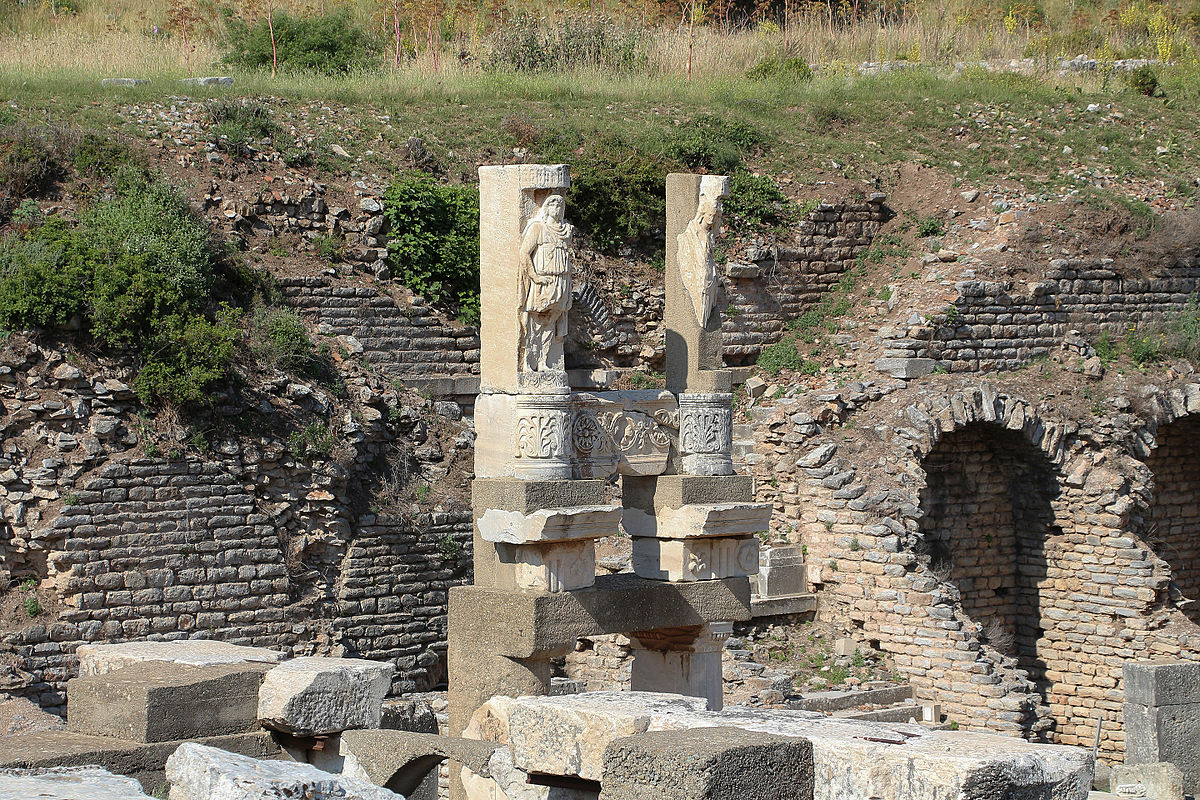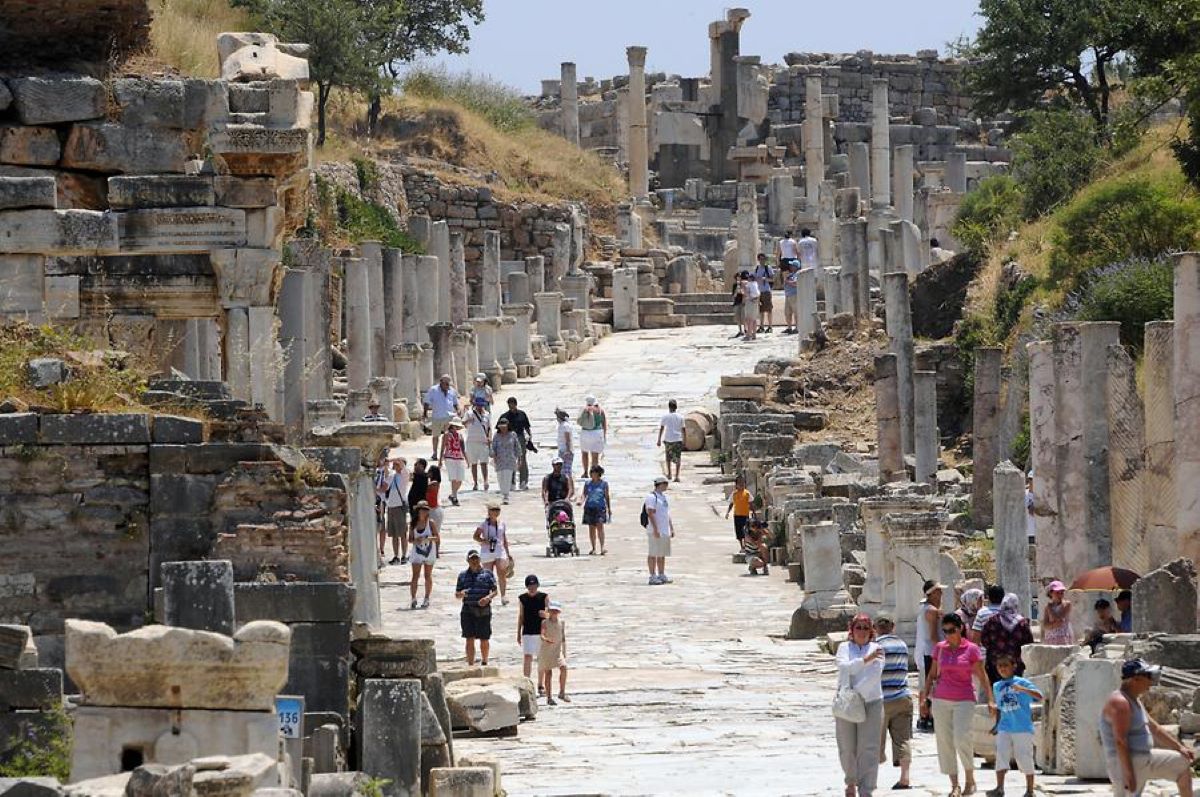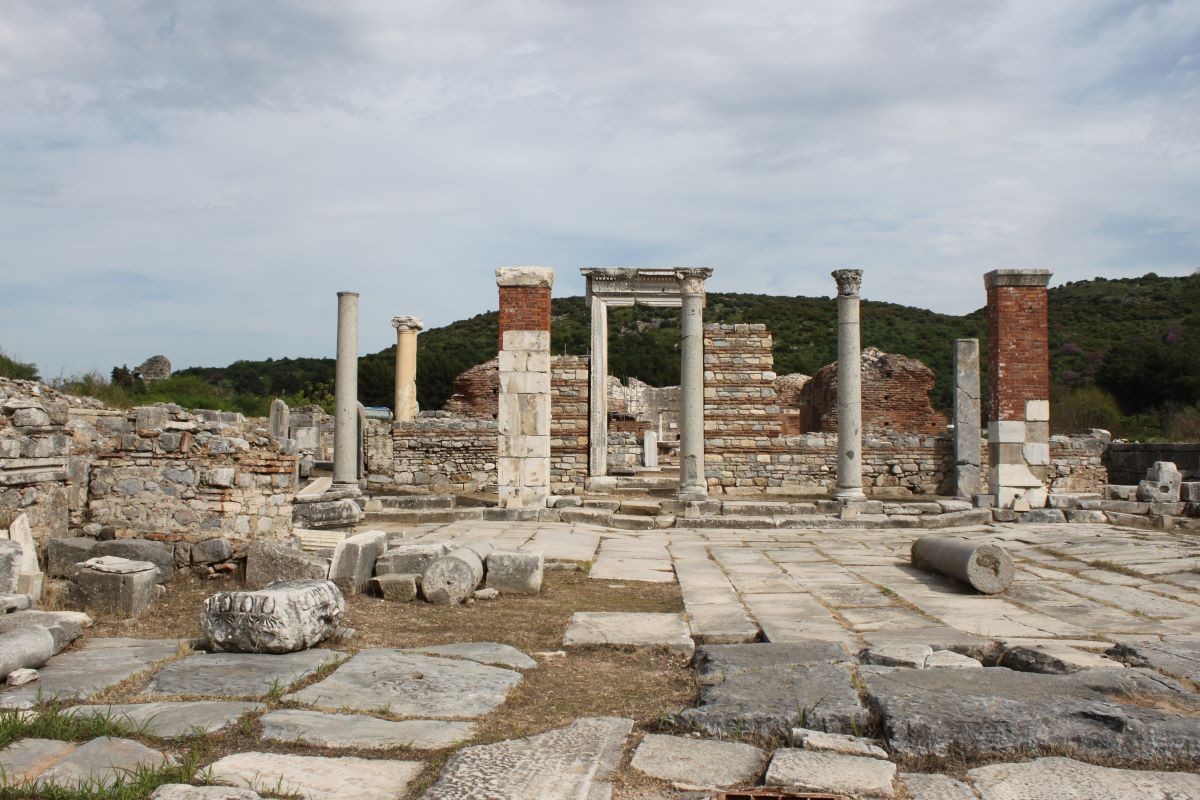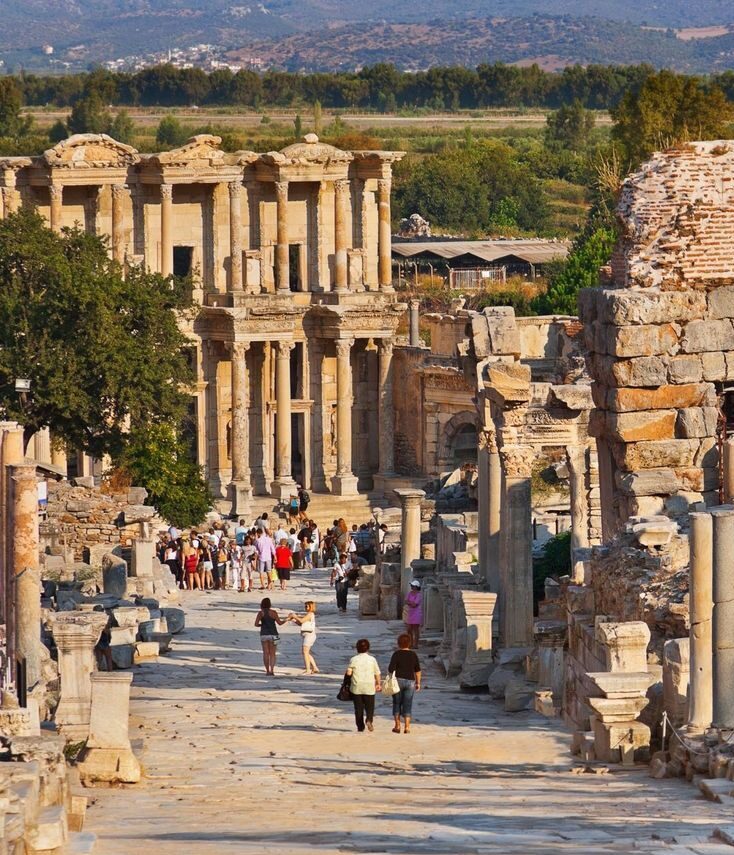The ancient city of Ephesus is a site of remarkable historical significance, with a…

The Magnificent Domitian Temple: A Testament to Roman Power and Influence in Ephesus
Ephesus was inhabited since the Neolithic period and became a prosperous port city during the Hellenistic and Roman eras. Known for its impressive architecture, vibrant culture, and strategic location, Ephesus played a pivotal role in the history of the Mediterranean region and beyond.
One of the most remarkable monuments of Ephesus is the Domitian Temple, which was dedicated to the Roman Emperor Domitian in the late 1st century AD. The temple was part of a larger complex that included a library, a gymnasium, and a stadium, and was a symbol of the city’s loyalty to the Roman Empire.
The Domitian Temple in Ephesus was built in the late 1st century AD, during the reign of the Roman Emperor Domitian (81-96 AD). It was one of the several buildings erected in Ephesus during the emperor’s rule, reflecting his efforts to strengthen his cult and image throughout the Roman Empire. The temple was designed by the famous architect Rabirius, who also designed other significant Roman buildings such as the Mausoleum of Augustus and the Temple of Saturn.
The Domitian Temple served as a religious and political center of Ephesus, emphasizing the city’s close ties with the Roman Empire. It was dedicated to the cult of the emperor, which was a widespread practice in the Roman world, especially in the eastern provinces. The cult of the emperor involved the worship of the reigning emperor as a divine figure, embodying the power, wisdom, and benevolence of the gods. The temple was also used for civic and social events, such as public gatherings, festivals, and ceremonies, and served as a symbol of the city’s prestige and prosperity.
Domitian was a controversial figure in Roman history, known for his authoritarian rule, military campaigns, and cultural policies. He came to power after the death of his brother Titus, and sought to establish himself as a strong and capable leader, often resorting to ruthless methods to maintain his grip on power. Despite his harsh reputation, Domitian also had a passion for the arts and literature, and sponsored many prominent writers and artists of his time. He built several public works, including roads, aqueducts, and monuments, and encouraged the development of new technologies and industries. His rule was marked by both successes and failures, including military victories in Britannia and Dacia, as well as political purges, financial crises, and natural disasters.
His association with Ephesus was significant, as the city was a major commercial and cultural center in Asia Minor, and was renowned for its wealth, beauty, and intellectual achievements. By dedicating a temple to Domitian, Ephesus expressed its loyalty to the emperor and its commitment to the Roman values and ideals. The temple was also a way for Ephesus to secure the imperial favor and protection, as well as to enhance its status and influence in the region. Overall, the Domitian Temple was a testament to the complex and dynamic relationship between Rome and its provincial cities, and to the fusion of local and imperial identities in ancient times.The Domitian Temple in Ephesus reflects his efforts to promote his cult and image throughout the Roman Empire, and to emphasize the loyalty and submission of the eastern provinces to Rome.
The Domitian Temple was an impressive structure, located at the heart of the city of Ephesus. It was built on a raised platform, with a monumental staircase leading to the entrance. The temple’s façade was adorned with richly decorated reliefs, depicting scenes from Roman mythology, such as the labors of Hercules and the triumph of Bacchus. The reliefs were framed by Corinthian columns, which supported a pediment with a sculptural group of the emperor and his family. The temple’s roof was covered with marble tiles, and its walls were decorated with colorful mosaics and frescoes.
The interior of the Domitian Temple was equally impressive, with a spacious and well-lit central hall, surrounded by smaller rooms and galleries. The central hall housed a large statue of the emperor, made of bronze or marble, and adorned with precious gems and ornaments. The statue was placed on a pedestal, in front of an altar, where offerings were made to the emperor and the gods. The walls and ceiling of the hall were decorated with intricate carvings, paintings, and murals, depicting scenes from Roman history and mythology, as well as the life of the emperor.
The Domitian Temple was a masterpiece of Roman architecture, combining elements of Greek, Roman, and local styles. The temple was designed to convey a sense of grandeur, power, and elegance, reflecting the emperor’s aspirations and ideals. The temple’s most distinctive features were its high podium, colonnade, and frieze, which gave it a sense of monumentality and sophistication. The use of marble, reliefs, and statues also added to the temple’s artistic and symbolic value, creating a visual and emotional impact on the viewers. The temple was a prime example of how architecture could express political, social, and religious messages, and how it could shape the perception of a city and its culture.
The Domitian Temple was a major center of religious activity in Ephesus, dedicated to the worship of the emperor as a divine figure. The cult of the emperor was a vital aspect of Roman religion, and played a crucial role in the political and social life of the Empire. By honoring Domitian in this way, Ephesus demonstrated its devotion to the emperor and its allegiance to Rome. The temple also served as a focal point for public and private rituals, such as sacrifices, processions, and prayers, and provided a sense of community and identity for the citizens of Ephesus.
The Domitian Temple was also an important symbol of political power and authority, both for the emperor and the city of Ephesus. The temple’s construction and decoration were costly and labor-intensive, and demonstrated the wealth and prestige of Ephesus as a major urban center. The temple also served as a venue for public events and speeches, and was used by local officials and dignitaries to express their loyalty to the emperor and to strengthen their political positions. The temple’s association with Domitian, a powerful and controversial emperor, also reflected the complex and evolving relationship between Rome and its provinces.
The Domitian Temple in Ephesus experienced a gradual decline in the 2nd century AD, as the Roman Empire faced political and economic instability, and as the cult of the emperor lost its appeal and significance. The decline of the temple was also related to the rise of Christianity, which challenged the traditional pagan beliefs and practices and led to the closure and destruction of many pagan temples. As a result, the Domitian Temple lost its status as a religious and cultural center, and fell into disrepair and neglect.
The final blow to the Domitian Temple came in the 4th century AD, when the Christian emperor Theodosius I ordered the closure and destruction of all pagan temples and cults in the Empire. The temple was looted, desecrated, and burned, and its marble and sculptures were used for other purposes or destroyed. The destruction of the temple marked the end of an era in Ephesus and the triumph of Christianity over paganism.
Despite the destruction and neglect, some parts of the Domitian Temple have survived to this day, thanks to the efforts of archaeologists, historians, and conservationists. The ruins of the temple have been excavated and studied since the 19th century, and have yielded valuable insights into the architecture, art, and culture of the Roman period. The site of the temple is now part of the Ephesus Archaeological Museum, which showcases the artifacts and finds from the temple and other sites in Ephesus. The museum also hosts exhibitions, lectures, and events that promote the understanding and appreciation of the rich heritage of Ephesus and the ancient world. Through these efforts, the legacy of the Domitian Temple lives on, as a testament to the enduring power and beauty of human creativity and imagination.




This Post Has 0 Comments